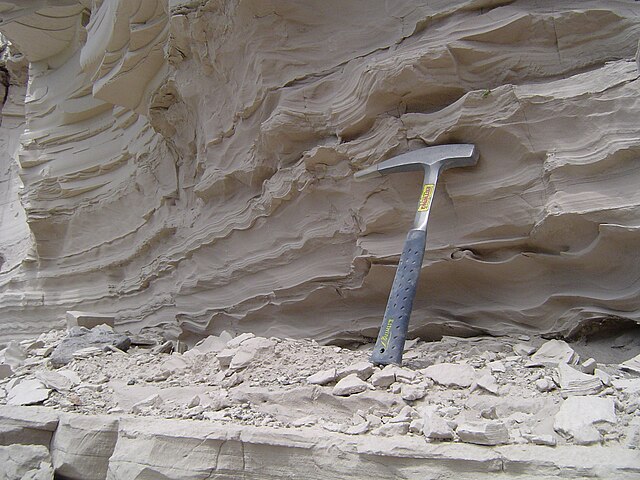Pyroclastic rocks are clastic rocks composed of rock fragments produced and ejected by explosive volcanic eruptions. The individual rock fragments are known as pyroclasts. Pyroclastic rocks are a type of volcaniclastic deposit, which are deposits made predominantly of volcanic particles. 'Phreatic' pyroclastic deposits are a variety of pyroclastic rock that forms from volcanic steam explosions and they are entirely made of accidental clasts. 'Phreatomagmatic' pyroclastic deposits are formed from explosive interaction of magma with groundwater. The word pyroclastic is derived from the Greek πῦρ, meaning fire; and κλαστός, meaning broken.
USGS scientist examines pumice blocks at the edge of a pyroclastic flow from Mount St. Helens
Rocks from the Bishop Tuff, uncompressed with pumice on left; compressed with fiamme on right.
Clastic rocks are composed of fragments, or clasts, of pre-existing minerals and rock. A clast is a fragment of geological detritus, chunks, and smaller grains of rock broken off other rocks by physical weathering. Geologists use the term clastic to refer to sedimentary rocks and particles in sediment transport, whether in suspension or as bed load, and in sediment deposits.
A thin section of a clast (sand grain), derived from a basalt scoria. Vesicles (air bubbles) can be seen throughout the clast. Plane light above, cross-polarized light below. Scale box is 0.25 mm.
Claystone from Montana
Conglomerate
Breccia. Notice the angular nature of the large clasts






